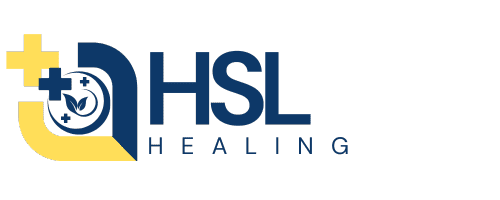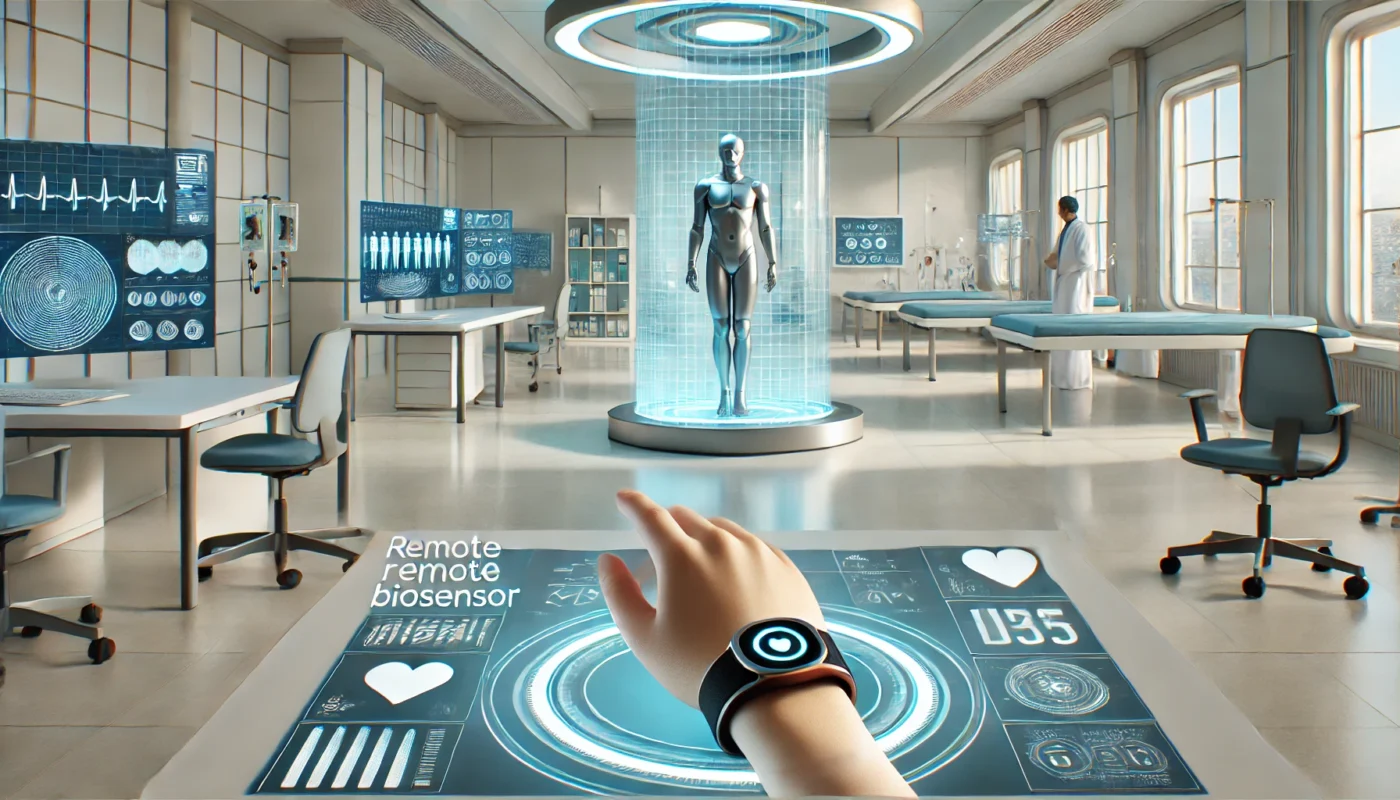Hypertension, or high blood pressure, is a silent yet pervasive condition, contributing to heart disease, stroke, kidney failure, and other serious complications. According to the World Health Organization (WHO), it affects over 1.28 billion people globally, with many remaining undiagnosed or undertreated. Managing hypertension effectively requires constant monitoring and timely interventions, which have traditionally relied on sporadic blood pressure measurements taken in clinical settings. However, advancements in wearable technology and remote biosensors are transforming this paradigm. These devices provide real-time, continuous data, empowering individuals and healthcare providers to take proactive steps in blood pressure management.
This article delves into the evolution of remote biosensors, their role in hypertension management, the benefits they offer, and the potential challenges and solutions for integrating this technology into routine care.
You May Also Like: Can Artificial Organs Help with Hypertension? The Case for Bioengineering
Understanding Remote Biosensors
What Are Remote Biosensors?
Remote biosensors are wearable or implantable devices designed to monitor physiological parameters and transmit data wirelessly to healthcare systems or personal devices. For hypertension management, biosensors can track vital metrics such as blood pressure, heart rate, physical activity, and sleep patterns in real time.
Key Components of Biosensors
- Sensors: Capture physiological signals, such as blood pressure or pulse rate.
- Processors: Analyze the captured data and convert it into actionable information.
- Wireless Communication: Transmit data to connected devices or healthcare systems for monitoring and analysis.
- User Interface: Allow users to view their metrics and trends through smartphone apps or wearable displays.

The Role of Remote Biosensors in Hypertension Management
Real-Time Blood Pressure Monitoring
Traditional blood pressure management relies on periodic readings taken at home or in a clinical setting, which may miss significant fluctuations. Remote biosensors enable continuous monitoring, capturing variations in blood pressure throughout the day.
- Example: Biosensors like smartwatches with photoplethysmography (PPG) technology detect changes in blood flow and calculate blood pressure indirectly.
Identifying Patterns and Triggers
By collecting long-term data, biosensors help identify patterns in blood pressure, including morning surges or spikes triggered by stress, physical activity, or dietary choices. This information allows for personalized interventions.
- Case Study: A study in Hypertension Research (2020) demonstrated that remote biosensor data helped adjust medication timing for better blood pressure control.
Enhancing Medication Adherence
Wearable devices can remind users to take their medications and track adherence, ensuring consistent management of hypertension.
- Example: Smart pill dispensers integrated with biosensors notify users and healthcare providers of missed doses, improving compliance.
Enabling Early Interventions
Real-time alerts generated by biosensors can warn of dangerous spikes in blood pressure, allowing for immediate action. For instance, a sudden increase in readings may prompt users to rest, take medication, or seek medical attention.
Benefits of Remote Biosensors in Hypertension Management
1. Personalized Care
Biosensors provide individualized insights into blood pressure trends and responses to interventions. This data allows healthcare providers to tailor treatments, including medication dosages, lifestyle changes, and dietary recommendations.
- Evidence: A study in The Journal of Telemedicine and Telecare (2021) found that remote monitoring improved blood pressure control in 72% of participants compared to standard care.
2. Convenience and Accessibility
Remote biosensors eliminate the need for frequent clinic visits, making hypertension management more convenient, especially for individuals in rural or underserved areas.
- Example: Wearable devices like the Omron HeartGuide, a smartwatch that measures blood pressure, allow users to monitor their health at home.
3. Empowering Patients
With access to real-time data, patients become active participants in their care. Understanding how behaviors, such as diet or exercise, affect blood pressure encourages healthier habits.
- Survey Data: A Journal of Hypertension (2020) survey revealed that 85% of patients using biosensors reported feeling more in control of their condition.
4. Integration with Telehealth
Biosensors seamlessly integrate with telehealth platforms, enabling healthcare providers to monitor patients remotely and intervene as needed. This integration reduces hospitalizations and improves long-term outcomes.

Types of Remote Biosensors for Hypertension
1. Wearable Blood Pressure Monitors
These devices, often in the form of smartwatches or armbands, use non-invasive techniques such as PPG and oscillometric methods to measure blood pressure.
- Example: Omron HeartGuide, Fitbit, and Samsung Galaxy Watch include blood pressure tracking capabilities.
2. Smart Rings and Patches
Devices like smart rings and adhesive patches measure metrics such as heart rate variability, physical activity, and sleep patterns, providing indirect insights into blood pressure control.
- Example: BioBeat’s wearable patch continuously monitors vital signs, including blood pressure, through photoplethysmography.
3. Implantable Biosensors
Implantable devices provide continuous, highly accurate data by measuring internal physiological changes. Though less common, these sensors are valuable for patients with severe hypertension or complex health needs.
- Example: CardioMEMS HF System monitors pulmonary artery pressure, a key marker for hypertension and heart failure.
4. Smartphone-Connected Devices
Smartphone-compatible devices such as portable cuffs or finger monitors sync with apps to record and analyze blood pressure data.
Challenges and Solutions
1. Accuracy and Reliability
- Challenge: Some wearable devices may provide inconsistent or inaccurate readings due to factors like motion artifacts or improper usage.
Solution: Advances in sensor technology and algorithms are improving accuracy, while user education ensures proper use of devices.
2. Data Overload
- Challenge: Continuous monitoring generates vast amounts of data, which can be overwhelming for users and healthcare providers.
Solution: AI-driven analytics filter and prioritize critical information, making data actionable without overwhelming users.
3. Privacy and Security Concerns
- Challenge: Transmitting sensitive health data wirelessly raises concerns about data breaches and misuse.
Solution: Implementing robust encryption protocols and compliance with regulations like GDPR and HIPAA ensures data security.
4. Cost and Accessibility
- Challenge: Advanced biosensors can be expensive, limiting access for low-income populations.
Solution: Increased competition and mass production are driving down costs, while initiatives like insurance reimbursement and government subsidies improve accessibility.

The Role of Nutritional Supplements in Hypertension Management
In addition to using remote biosensors, individuals with hypertension can benefit from nutritional supplements that support blood pressure control. Below are five evidence-based supplements:
1. Omega-3 Fatty Acids
Omega-3s reduce inflammation and enhance endothelial function, supporting blood pressure regulation. A meta-analysis in Hypertension (2018) reported reductions of 4 mmHg in SBP with omega-3 supplementation.
2. Hibiscus Extract
Hibiscus promotes nitric oxide production, improving blood vessel flexibility and reducing blood pressure. A study in The Journal of Nutrition (2010) showed that hibiscus tea reduced SBP by 6 mmHg.
3. Magnesium Glycinate
Magnesium helps relax blood vessels and improve blood flow, making it a valuable supplement for hypertension management. A study in Magnesium Research (2016) found that magnesium supplementation reduced systolic blood pressure (SBP) by 5 mmHg.
4. Coenzyme Q10 (CoQ10)
CoQ10 is an antioxidant that protects blood vessels from oxidative damage and improves mitochondrial function. Research in Hypertension Research (2007) demonstrated that CoQ10 supplementation lowered SBP by 11 mmHg.
5. Beetroot Powder
Beetroot powder is rich in nitrates, which convert to nitric oxide, promoting vasodilation and improved circulation. Research in Nutrition Journal (2017) found a 4 mmHg reduction in SBP with beetroot supplementation.
The Future of Remote Biosensors in Hypertension Management
1. Integration with AI and Machine Learning
AI-powered platforms will analyze biosensor data to predict hypertension-related complications and recommend personalized interventions.
2. Wearable and Implantable Advancements
Future biosensors will offer improved accuracy, smaller designs, and enhanced capabilities, such as monitoring multiple parameters simultaneously.
3. Global Accessibility
As costs decrease, biosensors will become widely accessible, addressing disparities in hypertension care across different socioeconomic groups.

Conclusion
Remote biosensors are revolutionizing hypertension management by providing real-time, actionable data that empowers patients and healthcare providers alike. From wearable blood pressure monitors to implantable devices, these technologies offer unparalleled insights into blood pressure trends, enabling proactive and personalized interventions. While challenges such as accuracy and cost remain, ongoing advancements in sensor technology, AI integration, and global accessibility promise a future where hypertension management is smarter, more effective, and universally available. By combining biosensors with lifestyle changes, medications, and nutritional support, individuals can achieve better blood pressure control and improved long-term health outcomes.
References
- Hypertension Research. (2020). Remote biosensors and hypertension management. Hypertension Research. Retrieved from https://www.springer.com
- The Journal of Telemedicine and Telecare. (2021). Real-time blood pressure monitoring with wearable devices. The Journal of Telemedicine and Telecare. Retrieved from https://journals.sagepub.com
- Hypertension. (2018). Omega-3 supplementation and blood pressure reduction. Hypertension. Retrieved from https://www.ahajournals.org
- Magnesium Research. (2016). The role of magnesium in vascular health. Magnesium Research. Retrieved from https://academic.oup.com
- The Journal of Nutrition. (2010). Hibiscus tea and vascular health. The Journal of Nutrition. Retrieved from https://academic.oup.com
Key TERMS for this article:
Hypertension, Remote Biosensors, Wearable Devices, Real-Time Monitoring, Personalized Care, Blood Pressure Management, Telehealth
Relevant and useful TAGS for this article:
Hypertension Management, Wearable Technology, Remote Monitoring, Biosensors, Blood Pressure Tracking, Personalized Medicine, Health Tech, AI in Healthcare, Nutritional Supplements, Cardiovascular Health
Important Note: The information contained in this article is for general informational purposes only, and should not be construed as health or medical advice, nor is it intended to diagnose, prevent, treat, or cure any disease or health condition. Before embarking on any diet, fitness regimen, or program of nutritional supplementation, it is advisable to consult your healthcare professional in order to determine its safety and probable efficacy in terms of your individual state of health.
Regarding Nutritional Supplements Or Other Non-Prescription Health Products: If any nutritional supplements or other non-prescription health products are mentioned in the foregoing article, any claims or statements made about them have not been evaluated by the U.S. Food and Drug Administration, and such nutritional supplements or other health products are not intended to diagnose, treat, cure, or prevent any disease.

